Results from the riser recoil analysis are presented in the plots below. The first figure plots a time history of the elevation of the LMRP following disconnect, while the second figure plots the horizontal displacement.
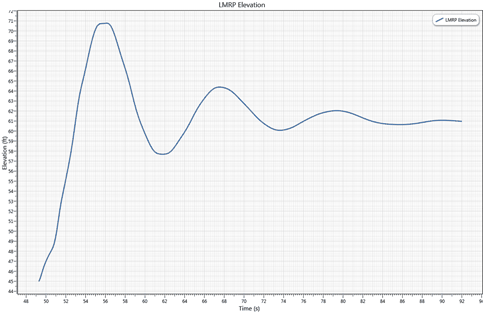
LMRP Elevation
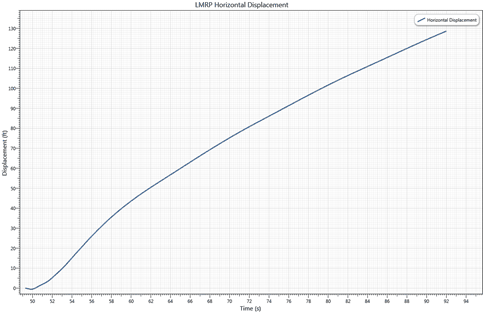
LMRP Horizontal Displacement
The figure below plots the length of the telescopic joint’s inner barrel over time. It is shown that the minimum length of the inner barrel immediately after disconnect is approximately 6.3 feet, so it does not collapse completely.
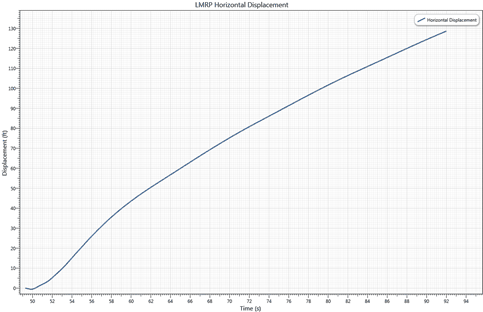
Length of Inner Barrel
Plots of effective tension in each tensioning line are also requested. These are all superimposed onto a single graph for comparison in the figure below. It is seen that, before disconnection, the tension in each line only varies slightly, and in a regular fashion, due to the wave loading and associated vessel response. After disconnection, the tension drops rapidly as the BOP and LMRP become detached from the wellhead and travel upwards. It gradually reaches steady state, as the riser motion is damped out by the damper elements. At all times, the effective tension remains positive, which implies that no slack develops in the tensioning lines.

Effective Tension in Tensioning Lines
The figure below shows the variation of effective tension at the interface of the telescopic joint’s outer barrel and the slip ring of the tensioning system. The envelope of tension over the complete riser is then plotted in second figure below.
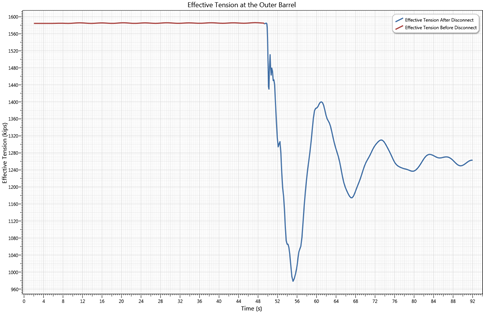
Effective Tension at Outer Barrel/Slip Ring Interface
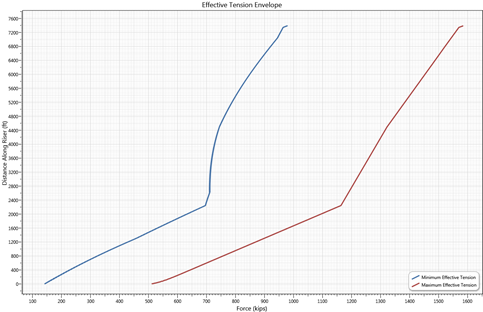
Envelope of Effective Tension in Riser
Effective compression does not occur in the main riser stack-up, with the minimum reported value approximately 150 kips.
Note: Although Flexcom can provide an approximate simulation of the disconnect event and subsequent riser recoil, a more comprehensive simulation may be performed using our DeepRiser software, which specialises in the analysis of top-tensioned risers. DeepRiser provides a detailed hydro-pneumatic tensioner, which models all the major hydraulic and pneumatic components. It can model each tensioning cylinder independently, and can simulate the behaviour of the anti-recoil control system.